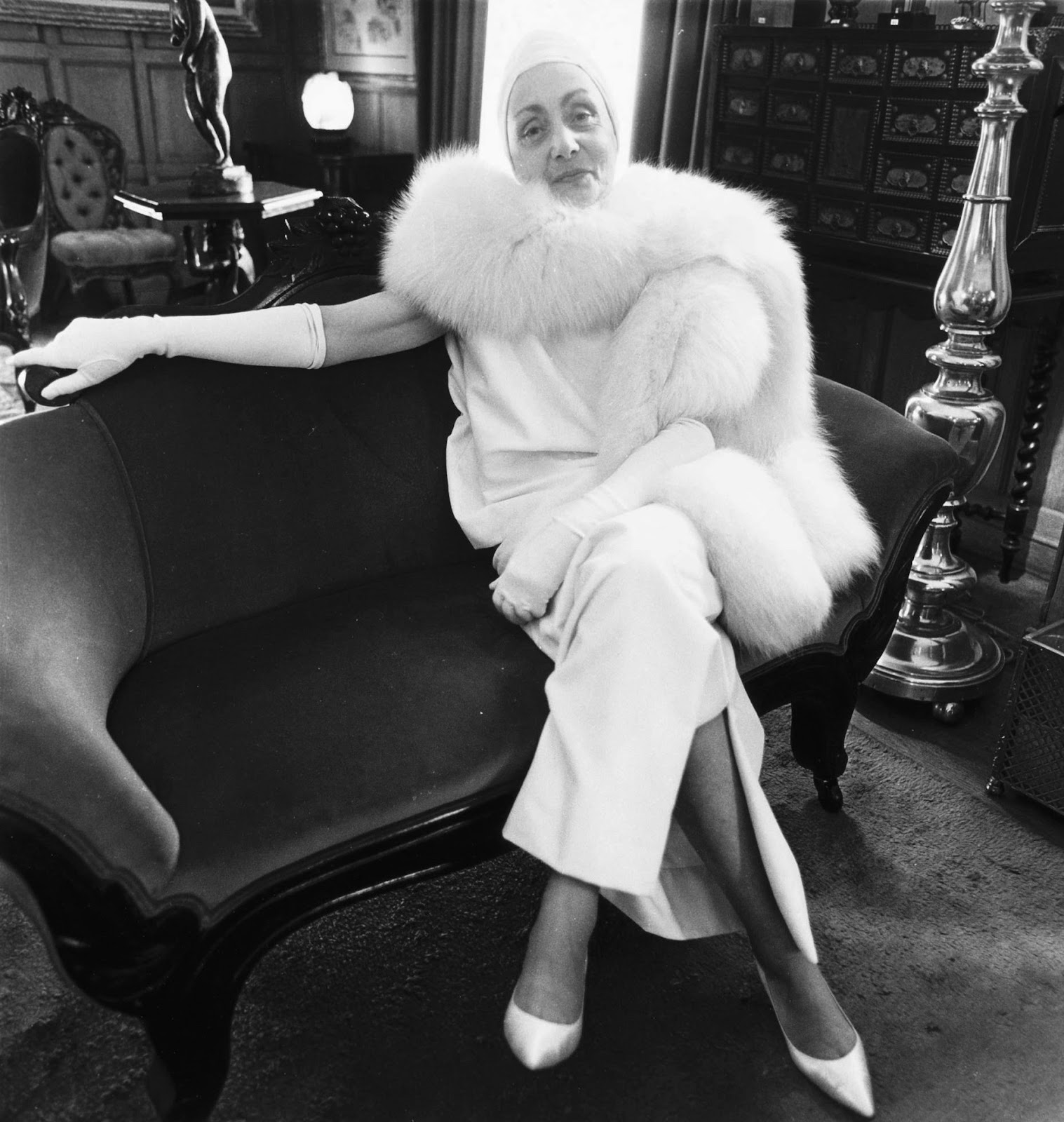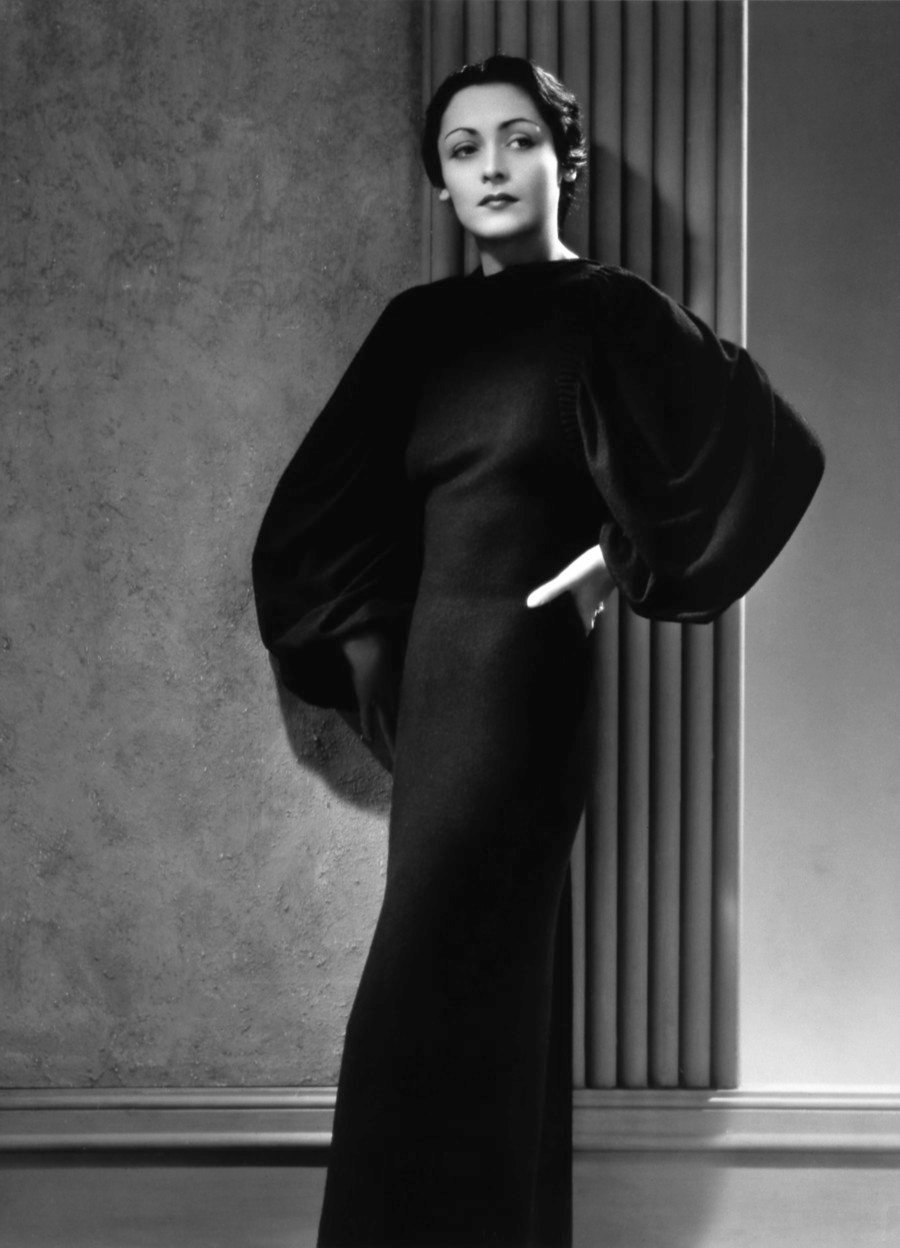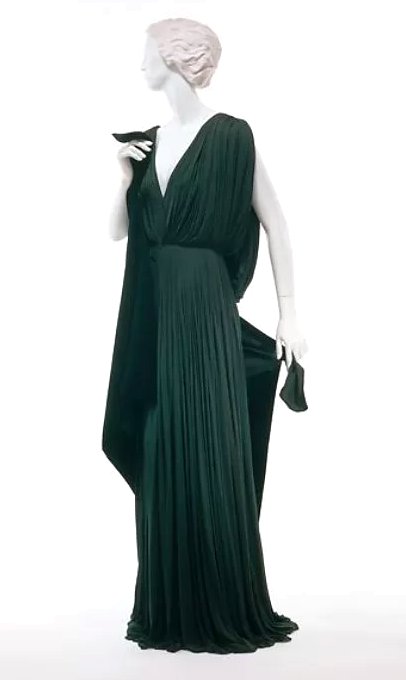
...like the fabulous Madame Grès!
From influential fashion writer Carine Roitfeld's CR Fashion Book site:
Madame Grès is quite possibly one of the most important - yet elusive - designers of the 20th century. And to a certain extent, it seems as though she would have wanted it that way. Aside from her talent (she was an unparalleled technician when it came to couture) the thing Grès was most known for was secrecy. Her tight-lipped approach to her techniques and concealment from the public eye earned her the nickname "The Sphinx of Fashion."Despite rarely giving interviews, there are some details we do know about Grès’ life. For starters, she's credited with convincing Cristobal Balenciaga to open his couture house. She was among the few designers during the Nazi occupation of France who was granted permission to remain open. But, in an act of defiance, she refused to create dresses for them and instead chose to make patriotic, French-themed designs. (She was shut down.) Grès had celebrity fans like Marlene Dietrich and Greta Garbo, and in 1970, she became the president of the Chambre Syndicale de la Haute Couture, couture's governing body.
Marlene Dietrich in a Madame Grès creation
One thing that remains shrouded in mystery is her technique. Most known from her oeuvre were her Grecian dresses, though these were not simply column-like gowns. Like Mariano Fortuny before her, her work was filled with intricate tucks, folds, and pleats. Much of her approach to design can be credited to her art background. “For me it is just the same to work with fabric or stone,” she once said. It helped that her looks were considered timeless, as she continuously produced similar styles. Unlike Yves Saint Laurent, who seemed to change his aesthetic every season, Grès could be counted on to show the same things again and again. It's hard to say if critics were amused or bored with this, but one thing is for sure: her skills at draping and sewing were so unparalleled that her own atelier workers had trouble dating dresses in her archive.
Timeless fashion, indeed:
[top row: 1950s, 1970s. bottom row: 1930s, 1970s - click to enlarge]
The indomitable Madame carried on working well into the 1980s before retiring, but The House of Grès suffered without her - it was purchased by the corrupt businessman Bernard Tapie (who only died earlier this year), and ended up in liquidation - and a disastrous business deal concerning her parfum Cabochard [which translates as "stubborn"] personally bankrupted her as well. After six decades of hard work to build her fortune Madame Grès found herself homeless, and it was only with the generosity of fellow couturiers Hubert de Givenchy, Pierre Cardin and Yves Saint Laurent that she was able to rent an apartment.
In a bizarre twist at the end of the tale, after she ended up in a nursing home, where she died just short of her 90th birthday, her daughter kept her mother's death a complete secret for a year, and when the Museum of Modern Art in New York mounted a major retrospective on Grès, she even corresponded with the press and others masquerading as her!
An enigma to the end.
Madame Grès (born Germaine Émilie Krebs, 30th November 1903 – 24th November 1993)






Back when fashion was great. True couture and camp.
ReplyDeleteFrom the 1920s to the 1980s, she was at the forefront of couture - and her classic lines would still not look out-of-place today! Jx
DeleteHer Creations are Sublime, Timeless and Classy... no need to reinvent yourself every Season when you have that level of Talent and Taste.
ReplyDeleteShe was immensely talented, indeed - such a shame she had no-one competent enough to take it all on when she retired... Jx
DeleteFascinating - you are an education.
ReplyDeleteMy pleasure... Jx
Delete